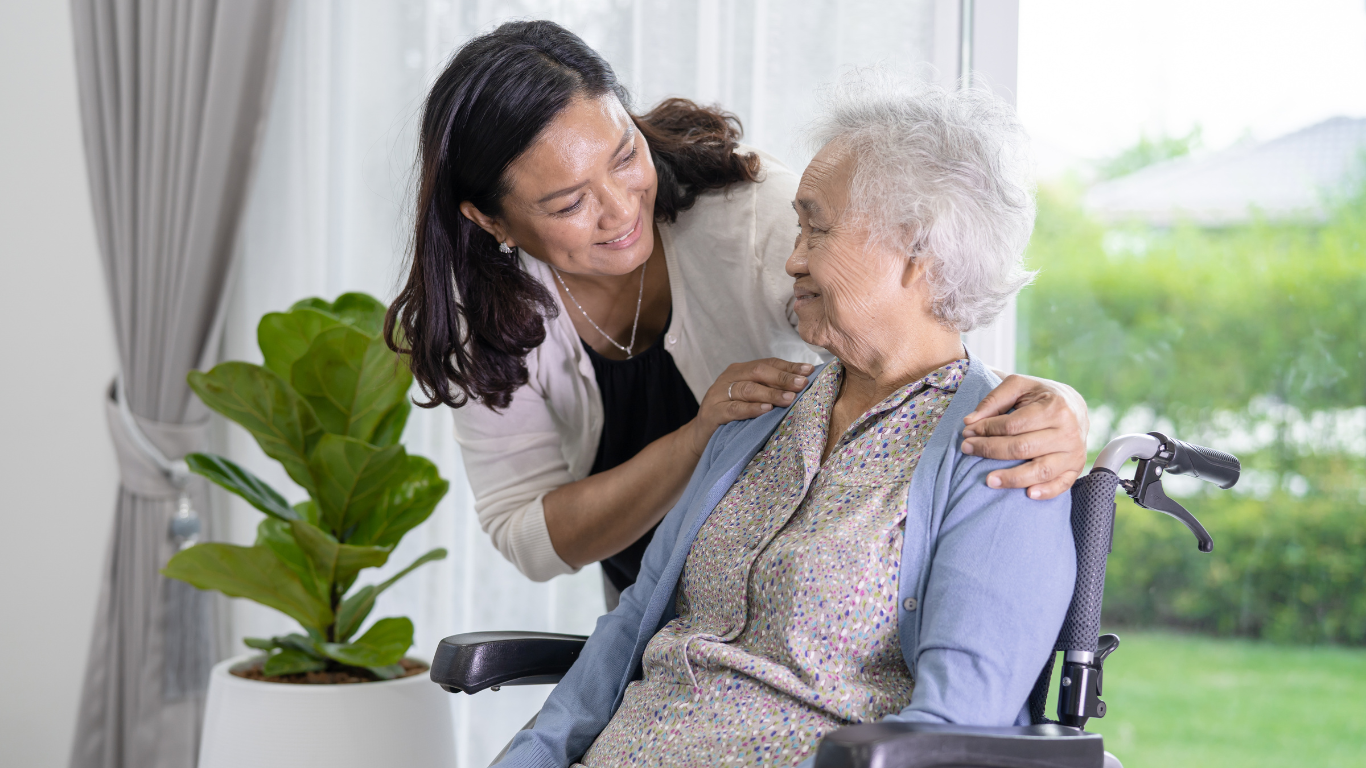Creating a Supportive Home Environment for Someone with Alzheimer’s

Caring for a loved one with Alzheimer’s can be rewarding, challenging and sometimes overwhelming. An important step in providing proper in-home care is creating a safe and comfortable environment. While it might not be a permanent solution, temporary home modifications can make a significant difference in and enhance quality of life for yourself and your loved one.
Below is a room-by-room guide for caregivers who want to adapt living spaces for Alzheimer’s home care. These changes are meant to be non-permanent and flexible, helping support your loved one’s independence for as long as possible.
Room-by-Room Modifications
Living room
- Remove trip hazards like loose rugs, electrical cords or clutter.
- Arrange furniture to prevent tipping and to create open, easy-to-navigate pathways.
- Use furniture with rounded edges to reduce injury risk.
- Install motion-sensor lights to ensure visibility if they wander at night.
- Cover sharp fireplace edges or remove fragile décor.
Kitchen
- Use safety knobs or stove covers to prevent accidental burns or fires.
- Lock up dangerous items, such as cleaning supplies, sharp utensils and alcohol.
- Label cabinet doors or use clear-front containers to simplify finding items.
- Unplug or store small appliances (toaster, blender) when not in use.
- Consider installing a stove shut-off device or disconnecting the oven if necessary.
Bathroom
- Install grab bars near the toilet and inside the shower or tub.
- Use non-slip mats in the tub and on the floor.
- Add a raised toilet seat or a toilet safety frame for easier access.
- Remove locks from bathroom doors or use ones that open from the outside in emergencies.
- Lower water heater temperature to avoid scalding.
Bedroom
- Keep the layout simple and familiar, minimizing furniture changes.
- Use a nightlight or motion-activated light to help with nighttime navigation.
- Avoid electric blankets or heating pads, which can cause burns.
- Store medications out of reach, ideally in a locked drawer or cabinet.
- Label drawers or create a simple outfit organizer to help with dressing.
- Hallways and staircases
- Install sturdy handrails on both sides of staircases.
- Add contrasting tape to stair edges to increase visibility.
- Keep walkways clear and consider a baby gate if navigating stairs becomes unsafe.
- Use door alarms or chimes to alert you to unattended room-to-room movement.
Decorative Elements That Help, Not Hinder
Creating a soothing, familiar environment can reduce anxiety and agitation. Here’s how decor choices can make a difference:
- Use soft, warm lighting to minimize shadows and glare.
- Stick to simple color schemes with good contrast between floors and walls to aid depth perception.
- Incorporate familiar photos and keepsakes as they may help with memory recall and provide comfort.
- Limit mirrors, which can cause confusion or fear if your loved one doesn’t recognize their reflection.
- Choose calming artwork and avoid busy patterns that could be misinterpreted.
- Label important areas or items with both words and pictures (e.g., “Bathroom” with a toilet image or icon).
Planning for the Future
While these modifications can support Alzheimer’s home care in the earlier stages, the disease is progressive. Eventually, even the most well-designed home environment and dedicated family caregiver may not be enough to ensure your loved one’s safety or provide the level of care they need.
That’s why it’s a good idea to begin the transition from Alzheimer’s home care to professional support before the need becomes urgent. Memory care neighborhoods, like the one at Freedom Pointe at The Villages, are specifically designed to support people with Alzheimer’s and other forms of dementia, offering round-the-clock care, cognitive programs and a safe, engaging environment tailored to each stage of the disease.
Learn more about Freedom Pointe’s Heartfelt CONNECTIONS program. Use the form below to schedule a visit to see our community.




